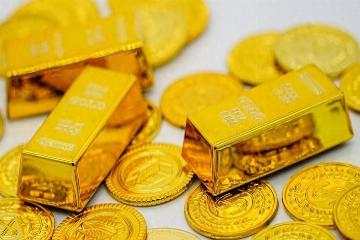In the realm of global finance, few trends have captured the attention of investors quite like the soaring price of goldAs the most significant hedge fund in the world, Bridgewater Associates has found itself at the center of this surge, particularly with its activity in gold Exchange Traded Funds (ETFs). The dynamics of their strategies have raised numerous questions, especially given their recent movements concerning gold investments.
A closer examination of Bridgewater's trading patterns reveals a dramatic shift in their holding in gold ETFsWhile the fund was once known for its substantial investments in various gold ETFs, recent reports indicate a strategic retreatWithin the first half of 2024, the hedge fund made headlines for drastically selling off its positions in three key gold ETFs, effectively exiting the top ten holders for these funds.
Interestingly, this selling spree comes on the heels of earlier statements from Ray Dalio, the founder of Bridgewater, who openly spoke in favor of gold in July 2023. His endorsement highlighted gold as a strong asset to hold in investors’ portfolios — a complete dichotomy when seen in context to the current sell-off
Advertisements
While this might seem contradictory, industry insiders propose that such moves do not necessarily indicate a bearish stance on gold but could be part of a more intricate financial strategy.
The removal of Bridgewater from the ranks of the top holders in gold ETFs prompts speculation about their reasoningFor one, it might reflect a comprehensive re-evaluation of their asset allocations rather than a straightforward exit from the gold marketExperts suggest that international funds like Bridgewater typically revise their strategies based on various market indicators, employing a diversified investment approach to mitigate risk.
The specifics of this transition are worth notingAs of the end of 2023, Bridgewater's three flagship funds held approximately 189 million shares across three prominent gold ETFsThe numbers show that the fund had significant stakes in well-known ETFs, ranking as major holders for each one
Advertisements
For example, by the end of December 2023, one of Bridgewater's funds was the second-largest holder of the Huashan Gold ETF, with over eight million sharesYet by June 2024, all these holdings had been diminished to the point where they no longer appeared in the top ranks of the largest shareholders.
The timeline of Bridgewater’s involvement with these ETFs provides a glimpse into their strategyThey initially entered the landscape of these gold ETFs in 2022, a time before gold prices truly skyrocketedThis timing implies a calculated foresight that seemed to have served them well until their recent shiftThe hesitation surrounding gold raises questions about their confidence in the commodity’s trajectory amidst growing global uncertainties.
According to a fund manager from Shanghai, Bridgewater’s reduction in gold ETF holdings could potentially correlate with broader economic assessments rather than a belief that gold itself is a failing asset
Advertisements
With economic unpredictability on the rise globally, Bridgewater might be reading the short-term landscape as limited in upside for gold, thus opting to reposition capital into assets that promise better returns in their view.
From a parallel standpoint, another asset manager based in Shenzhen expressed that Bridgewater might still value gold as an asset class but is merely adjusting how they hold itThis could involve purchasing equivalent quantities in overseas markets, thereby maintaining their overall investment in gold while possibly pursuing tactics like profit-taking or loss control.
Despite Bridgewater's actions, it is critical to highlight Dalio’s remarks from earlier in July, where he reaffirmed gold’s role as a fundamental part of an investment portfolioHe argued for gold's significance in maintaining a balanced investment strategy, suggesting that most portfolios should allocate substantially towards this asset, even amidst record high prices
- Weak Nonfarm Data Hits US Stocks
- The Rise of Sustainable Investment in Financial Markets
- Analyzing the U.S. Economy in the Third Quarter
- Forex Investing Through Economic Cycles
- Indonesia's Public Spending, Investment Recovering
His perspective showcases a nuanced understanding that while some investors might opt for short-term adjustments, the long-term value of gold should not be underestimated.
The current trajectory of gold prices supports this idea of potential upward momentum moving forward2023 witnessed an impressive climb in international gold prices, and ETFs tracking this investment experienced significant growth as a resultA notable example is the Huaxia Gold ETF, which saw gains of 27.90% from January to August of this yearOther gold-related ETFs from prominent financial institutions also reflected healthy upticks, reinforcing the notion that gold remains a coveted asset.
Even as gold sought to stabilize after breaking through the $2500 per ounce mark, the market exhibited fluctuationsInvestment managers are optimistic, asserting that both gold and related equities have substantial potential for growth on the horizon

Factors including an unfolding global interest rate cut cycle and fluctuating inflation levels in the U.Scould set the stage for renewed interest in goldSpecifically, recent trends suggest that the Federal Reserve’s shifts towards rate cuts may invigorate trading activity, leading to a sustainable upward trend in gold.
Examining the relationship between gold and U.Sfiscal deficits reveals another layer of significanceAs budget deficits are likely to continue under any administration, the overarching support for gold prices remains intactIn trading contexts, the largest gold ETF, SPDR, still has room for market expansion, signaling that the gold ceiling may not yet have been reachedAdditionally, ongoing monetary policy and geopolitical tensions serve as catalysts that may drive further investment into gold.
Investment professionals remain adamant about the multifaceted roles of gold, particularly as a hedge against economic volatility